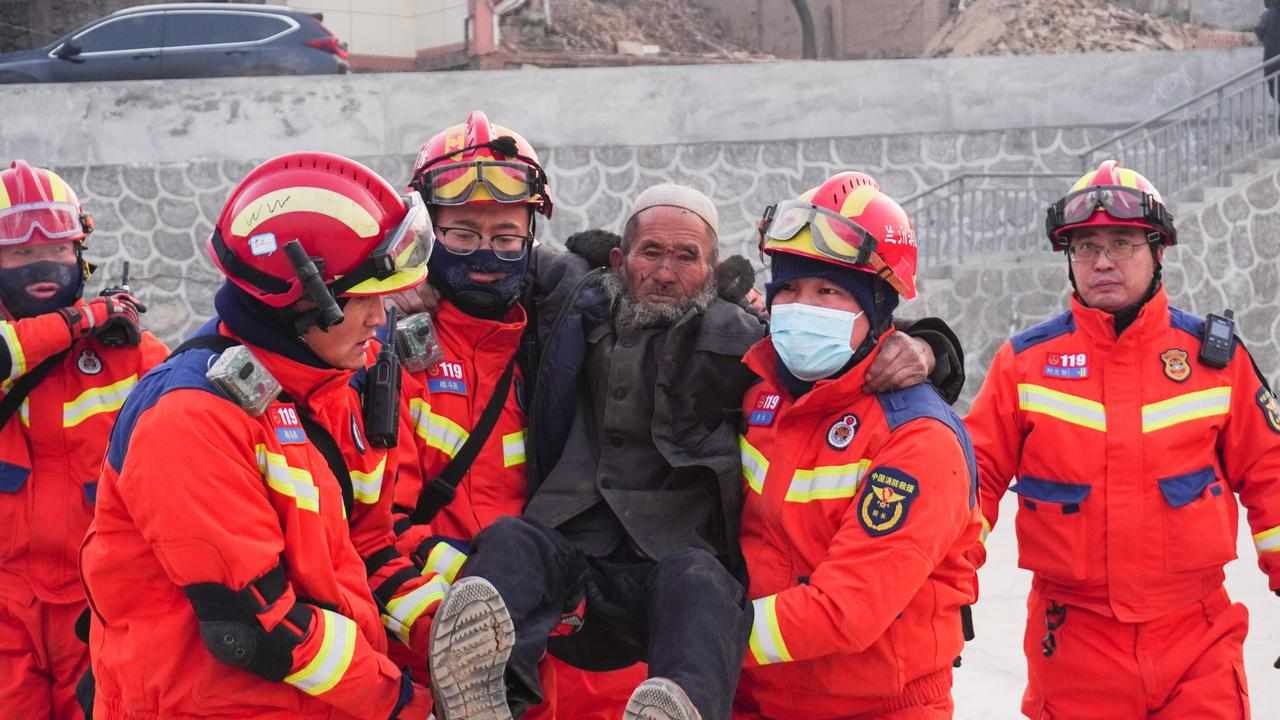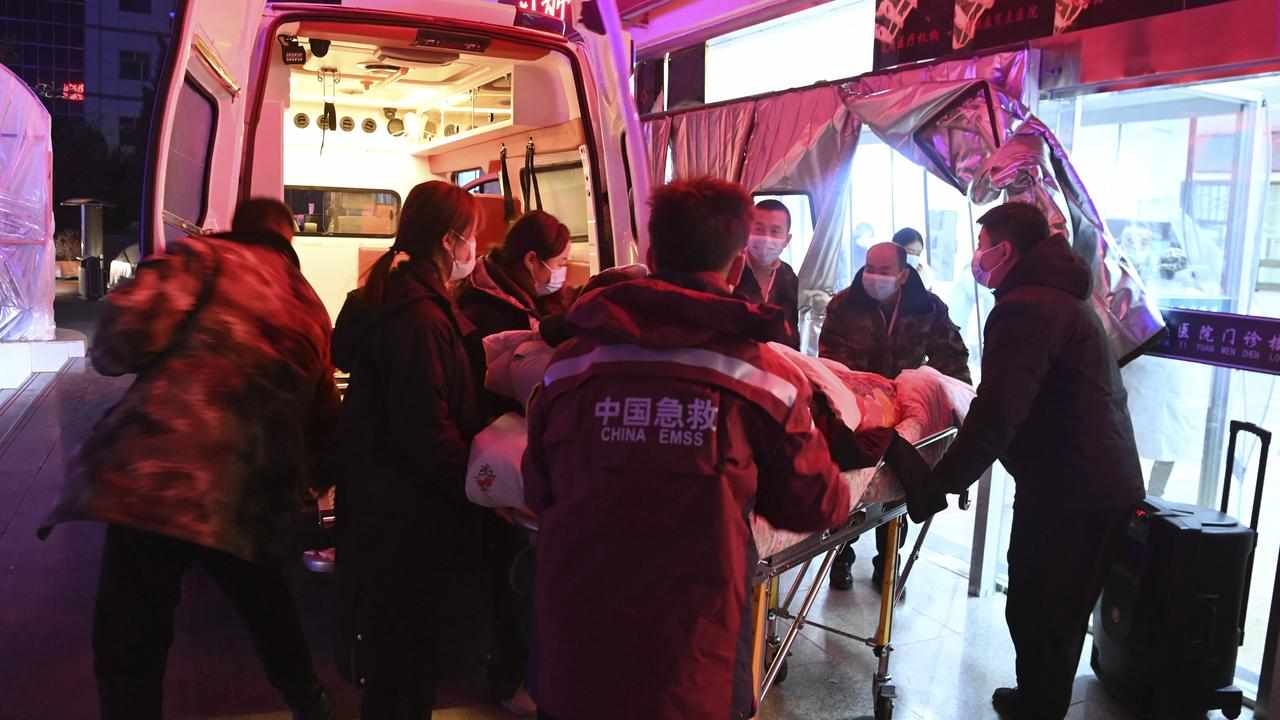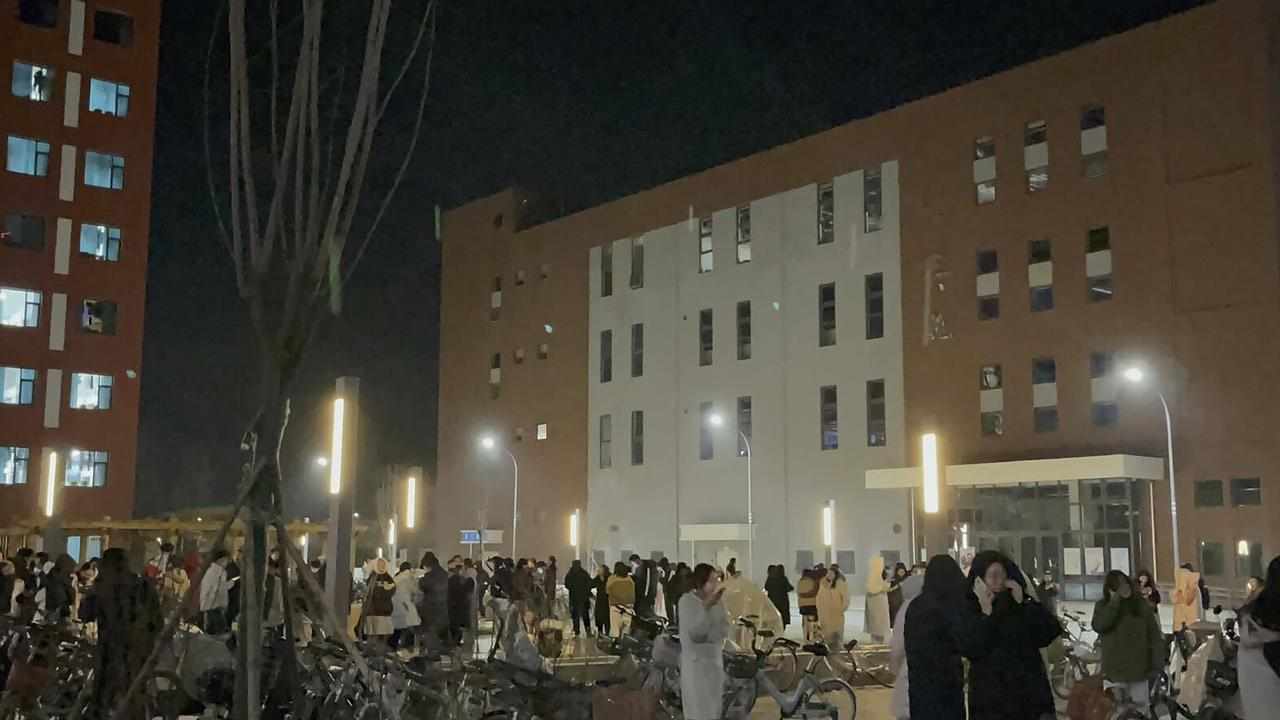A magnitude-6.2 earthquake has struck one of China's poorest regions, killing at least 127 people, injuring hundreds and bringing down mud houses in remote villages that never stood a chance.
Chinese state media arriving at the sixth commune of Dahe village, one of the worst-hit areas in China's northwestern Gansu province, found many houses were either at risk of collapse, or had already crumbled to the ground, especially homes built from earth and clay.
"I've lived for more than 80 years and had never seen such a big earthquake," said an old man who was being carried out of his damaged home by rescuers.

More than 155,000 homes in Gansu were either damaged or destroyed.
The quake rocked Gansu's Jishishan county just before midnight local time on Monday, at a depth of 10km. The epicentre was 5km from the provincial border straddling Gansu and Qinghai, where strong tremors were also felt.
Authorities have mobilised an array of emergency responses after the quake wrecked roads and infrastructure, triggered landslides, and half buried a village in silt. But rescue work has proved challenging in sub-zero temperatures, after a powerful cold snap swept across the country.
Earthquakes are common in provinces such as Gansu, lying on the northeastern boundary of the tectonically active Qinghai-Tibetan plateau. China's deadliest quake in recent decades was in 2008 when one of magnitude-8.0 struck Sichuan, killing nearly 70,000 people.
By lunch time on Tuesday, authorities in Gansu had reported 113 dead and 536 injured.
The death tally in Qinghai stood at 14 with 198 injured, later in the afternoon.
Officially, 20 people remained missing.

Earthquakes are common in western provinces such as Gansu, lying on the eastern boundary of the tectonically active Qinghai-Tibetan plateau.
China's deadliest quake in recent decades was in 2008 when a magnitude 8.0 temblor struck Sichuan, killing nearly 70,000 people.
About 2200 personnel from the Gansu provincial fire department and 900 from the forest brigade, as well as 260 professional emergency rescue workers, have been dispatched to respond to this latest disaster, the Xinhua news agency reported, adding that hundreds from the military and police have also been deployed.
The province, which has allocated 20 million yuan ($A4.2 million) to the local government for emergency response work, also sent supplies that included 2600 cotton tents, 10,400 folding beds, 10,400 quilts, 10,400 cotton mattresses, and 1000 sets of stoves.

County officials from Jishishan, with a population of about 260,000 people, told local media that the local government, lacking resources, had to rely on the provincial government. Gansu is among the poorest provinces in China.
As the disaster area is in a high-altitude region where the weather is cold, rescue efforts are working to prevent secondary disasters caused by factors beyond the quake, Xinhua said.
The temperature in Linxia, Gansu, near where the quake occurred, was about minus 14C on Tuesday morning.
Although the 72 hours after a quake are the most likely time to rescue survivors, that will be shortened by the harsh weather, with trapped victims facing higher risk, it said.
Some water, electricity, transportation, communications and other infrastructure have been damaged.
Power to the quake-hit area was being gradually restored, after the state grid sent 18 emergency repair teams, CCTV said. At noon local time, about 88 per cent of the power supply had been restored in Jishishan.
Dozens of highways and rural roads were damaged amid multiple landslides, although no casualties were reported.
State media footage showed fire rescue personnel combing through rubble of collapsed buildings - loose bricks have piled onto a dirt alley in a Gansu village after sliding off a damaged house, while in stronger structures walls held up but roofs had collapsed.
At a university in Gansu's capital, Lanzhou, some 180 km away from the epicentre, students dressed in down jackets were seen lingering in groups outside their dormitory after the quake, a video posted by state-backed The Paper showed.
In a village in Qinghai, the quake triggered a mudslide that left many houses half-covered in brown silt. Rescuers have deployed drones, excavators and bulldozers to find and rescue survivors, local media reported.
Tremors were felt as far as 1000 km away in central Henan province, where local media outlets shared videos of furniture swaying in people's homes.
State media reported at least 32 aftershocks in the hour after the quake hit.









